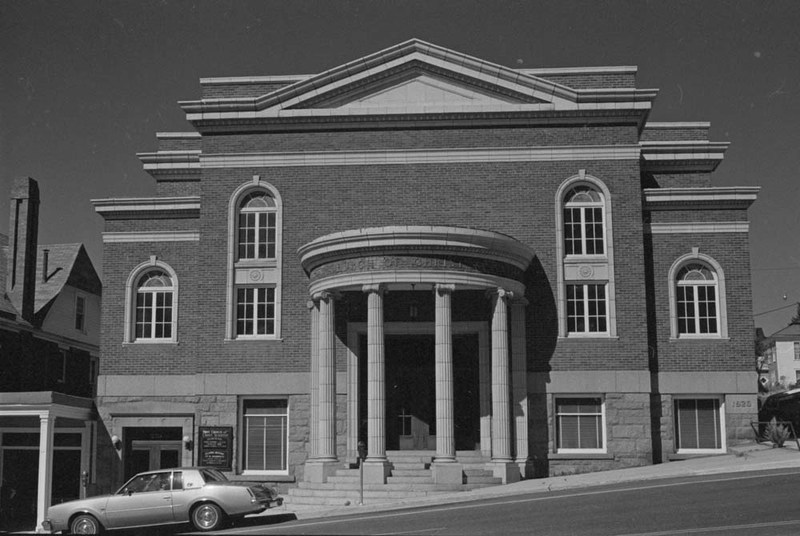
Christian Science was a young religion when believers first gathered in a private Butte home in 1893; according to church teachings, Mary Baker Eddy discovered this system of prayer-based healing in 1866. The congregation grew rapidly, and Butte’s First Church of Christ, Scientist, formally incorporated in 1911. Church members purchased a brick house on this site in 1914 and launched plans to build a new church two years later. In 1920 the congregation broke ground for its new edifice; increasing membership led it to expand the building in 1929. Prominent Butte architect Walter Arnold designed the Neoclassical building, which cost almost $100,000, all raised locally. The 1893 Columbian Exposition in Chicago had popularized Neoclassicism just at the moment that Christian Scientists began building permanent houses of worship. Thus, Neoclassicism became the denomination’s style of choice. Modern auditoriums designed for utmost comfort, large foyers to encourage sociability, symmetrical façades, and prominent porticos supported by classical columns were church hallmarks. Neoclassicism’s association with “beauty, harmony, and unity” suited the church’s ideology. The style also asserted permanence, a factor particularly important for the young religion.
Images

